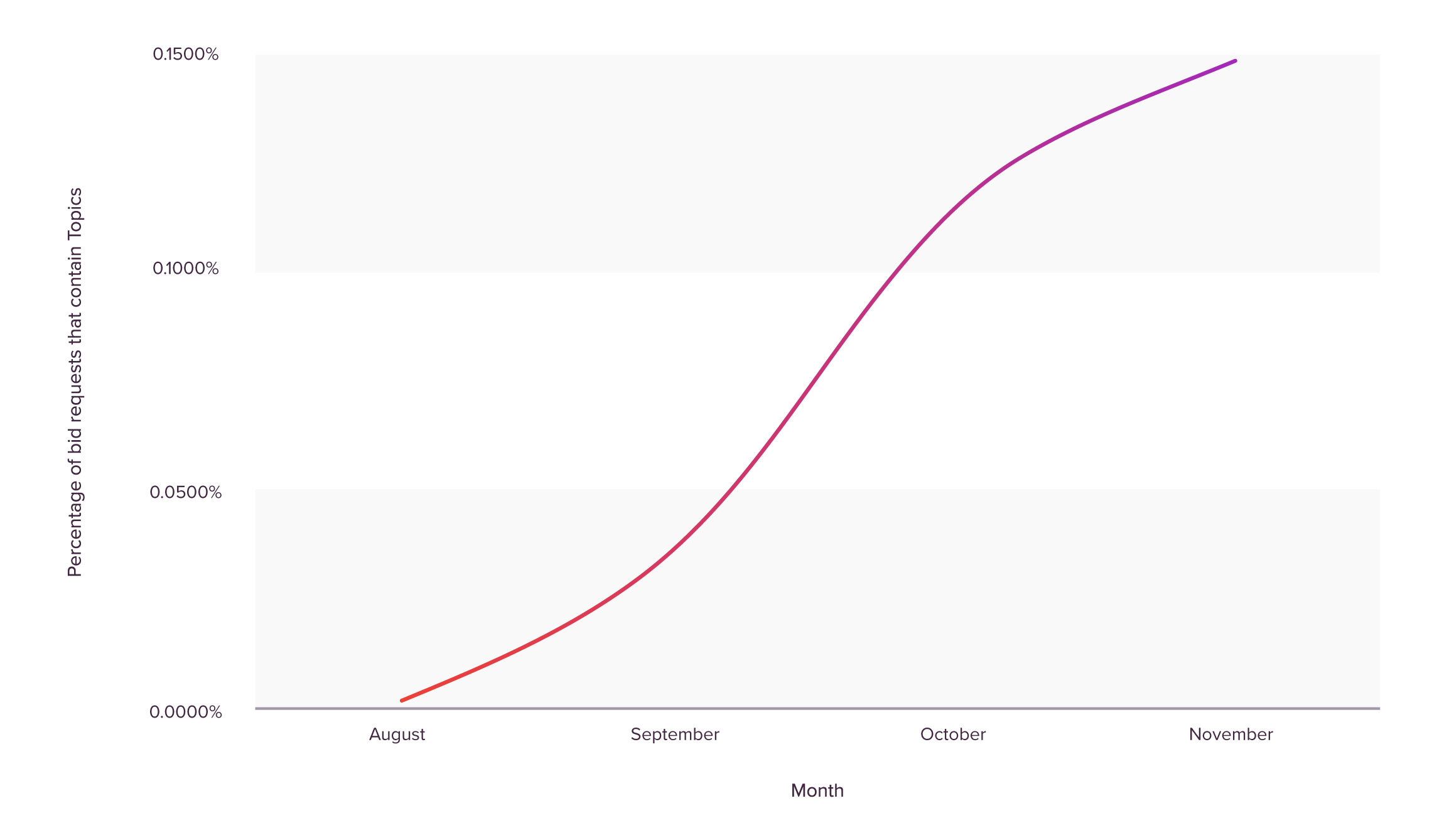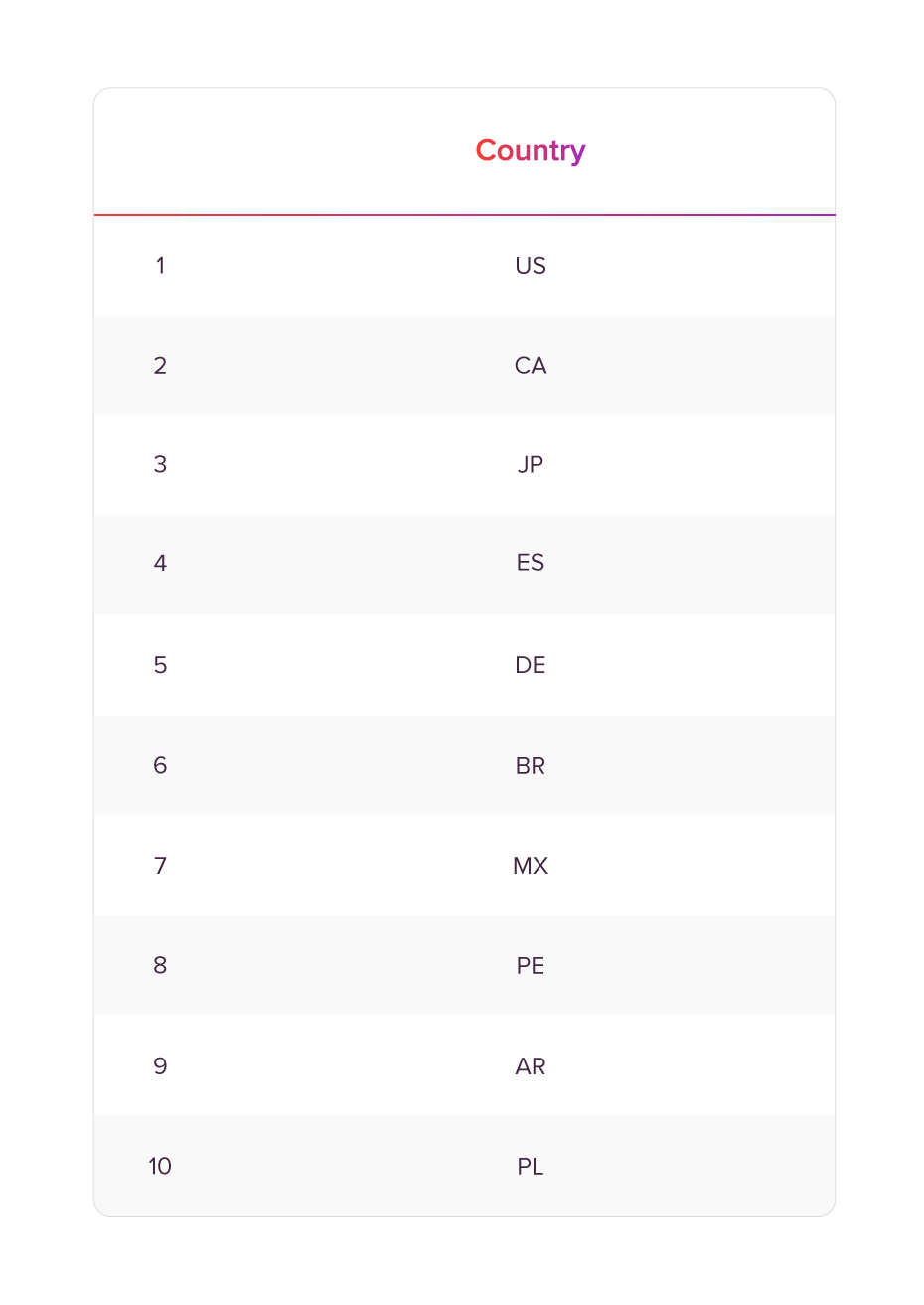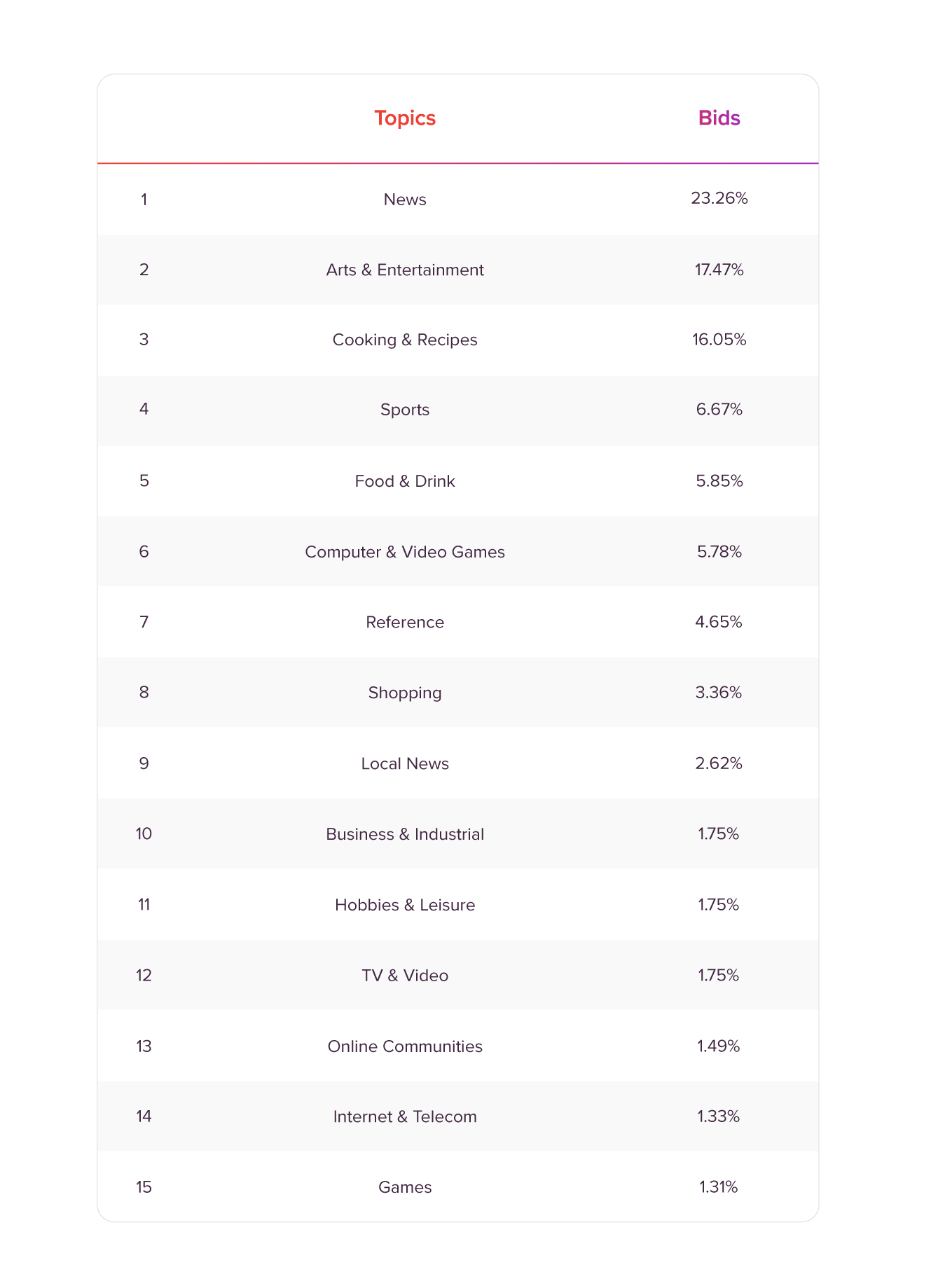Last Updated on: 26th May 2024, 08:05 pm
Key takeaways from this article:
- The scale of the Topics API is still very small for us; it amounts to only 0.15% of the bid requests we receive from SSPs (in November).
- Topics API integration among SSPs is growing, but they are unable to provide significant scale.
- According to official Chrome Status data, only about 10% of all page loads feature TopicsAPIFetch.
- The most popular Topics we receive are Cooking & Recipes, Arts & Entertainment, and News.
- By the end of November, the new taxonomy accounts for around 90% of bid requests.
Foreword
The cookieless future is coming very quickly. With the withdrawal of third-party cookies, the time of Google Privacy Sandbox will come. Topics API has been discussed many times in the media at a conceptual level, but there are few detailed studies, especially showing the scale of availability of these signals in the browser. We will try to answer the question of what causes this.
Table of Contents
- What is Google Topics API?
- What is the scale of Google Topics API?
- What are the most popular Topics?
- Summary
What is Google Topics API?
The Topics API proposal in Chrome’s Privacy Sandbox is designed to protect user privacy while enabling advertisers to show relevant content and ads. It will allow the Chrome browser to infer a selection of recognizable interest categories based on recent browsing history to enable sites to serve relevant ads.
The ultimate purpose of the Topics API and the Privacy Sandbox, more generally, is to allow digital ad personalization as it benefits users, publishers, and advertisers. A full explanation of Topics API can be found in our previous blog post.
What is the scale of Google Topics API?
It’s time to answer the question about the scale of the Topics API and why it is still a niche solution, even though it is assumed to be simple and easy to use. We have officially entered General Availability, where the Topics API is available to 99% of users. But what does that even mean? It means that 99% of users of newer versions of Chrome saw a message about the availability of Privacy Sandbox. For the browser to have access to the Topics API, the user had to actively opt-in to use Topics, and there is no publicly available information on how many users agreed to this.
Scale according to Chrome Status Site
According to the official website chromestatus.com, only about 10% of page loads loaded the “TopicsAPI_BrowsingTopics_Method” functions at least once.
 Figure 1
Figure 1
Source: https://chromestatus.com/metrics/feature/timeline/popularity/4182
How are we receiving the Topics API signal?
The Topics signal is obtained in OpenRTB bid requests within the SDA signal with taxonomy 600 or 601, as in the example shown below.
{
...
"user": {
"data": [
{
"ext": {
"segtax": 601,
"segclass": "classifier_v1"
},
"segment": [
{ "id": "356" },
{ "id": "12" },
{ "id": "211" }
]
}
]
}
}
Once we have received the signal in this way, we can decode it into the following segments.
| Topic ID | Topic Value |
| 356 | /Arts & Entertainment/Events & Listings/Film Festivals |
| 12 | /Arts & Entertainment/Movies |
| 211 | /Home & Garden/Home Improvement |
Our bidder then verifies whether the received segments are used in some ongoing campaign, validates them, and can prepare a bid response.
Visible scale—DSP perspective
From our perspective, however, we cannot observe such a scale. In November, we received a topics signal in only almost 0.15% (bid request with the Topics signal/all bid requests from Chrome browser) of all bid requests from partnering SSP on the Chrome browser. In October, it was 0.11%, and in September, it was approximately 0.037%.
We can see that the scale is growing at a stable pace and increasing daily.
 Figure 2 Percentage of bid request that contain Topics
Figure 2 Percentage of bid request that contain Topics
In November, we received the Topics API signal from 12 SSPs.
Scale by geography
In a geographic context, we also do not see a standard distribution because the United States had an indirectly proportional advantage in the number of bid requests from Topics over other countries, which does not coincide with the total number of bid requests from Chrome that we receive. This may be due to the technological advancement of DSPs operating in particular markets or the preparation of publishers. Figure 3 Top 10 countries from which we receive bid requests containing Topics
Figure 3 Top 10 countries from which we receive bid requests containing Topics
What are the most popular Topics?
“News,” “Arts & Entertainment,” and “Cooking and Recipes” are the most common topics. This is probably one of the easiest topics to match to the site and appears to be one of the easiest to witness. The top 15 topics we most frequently receive can be seen in the table below.  Figure 4 Top 15 most popular Topics in October and November 2023
Figure 4 Top 15 most popular Topics in October and November 2023
It gets more interesting when we look at the Topics combinations we get. In the Top 15 topics combinations, we see only four double sets. This means that most often we receive only one topic in a bid request. The number of combinations at this point indicates the great difficulty in witnessing Topics and, thus, in obtaining combinations for which more than one user topic is required. Figure 5 Top 15 most popular Topics combinations in October and November 2023
Figure 5 Top 15 most popular Topics combinations in October and November 2023
We can only find the first triple topic in 84th place, and it consists of the top three most frequently received Topics – Arts & Entertainment, Cooking & Recipes, News. Mathematically, this makes sense.
On November 3, the Chrome developers announced that they were starting to ramp up the new Taxonomy Topics to 100%. At the end of November, we were able to observe that the new taxonomy is already present in 90% of bid requests. The new taxonomy should bring positive changes in terms of commercial usability.
Summary
At the end of September, we were one of the first to integrate the Topics API into our bidder, enabling campaigns targeting the Topics signal. Given the previously mentioned data, particularly the scale and topics received, we cannot yet consider Topics API as an alternative to the solutions currently in use. We look forward to further increasing the scale and adoption of this solution because we see the Topics signal as a valuable input into our bidding models, just as Google Ads positioned topics in its conclusions of the experiments. The Topics API will also be able to be used as a standalone/major part of targeting policies for upper-funnel campaigns.
We will continue to test this solution and look forward to its development. In the near future, it will be particularly interesting to see the transition to the new top topics selection system and the potential positive changes this can bring. We are aware of ongoing discussions about changes to the classification of sites, which would allow the classifier to use not only domains but also metadata when assigning topics. This would certainly have a positive impact on the accuracy of data, especially from large publishers. At the same time, we are aware of the potential negative impact on privacy, so we are not sure what the end of this discussion will be.





